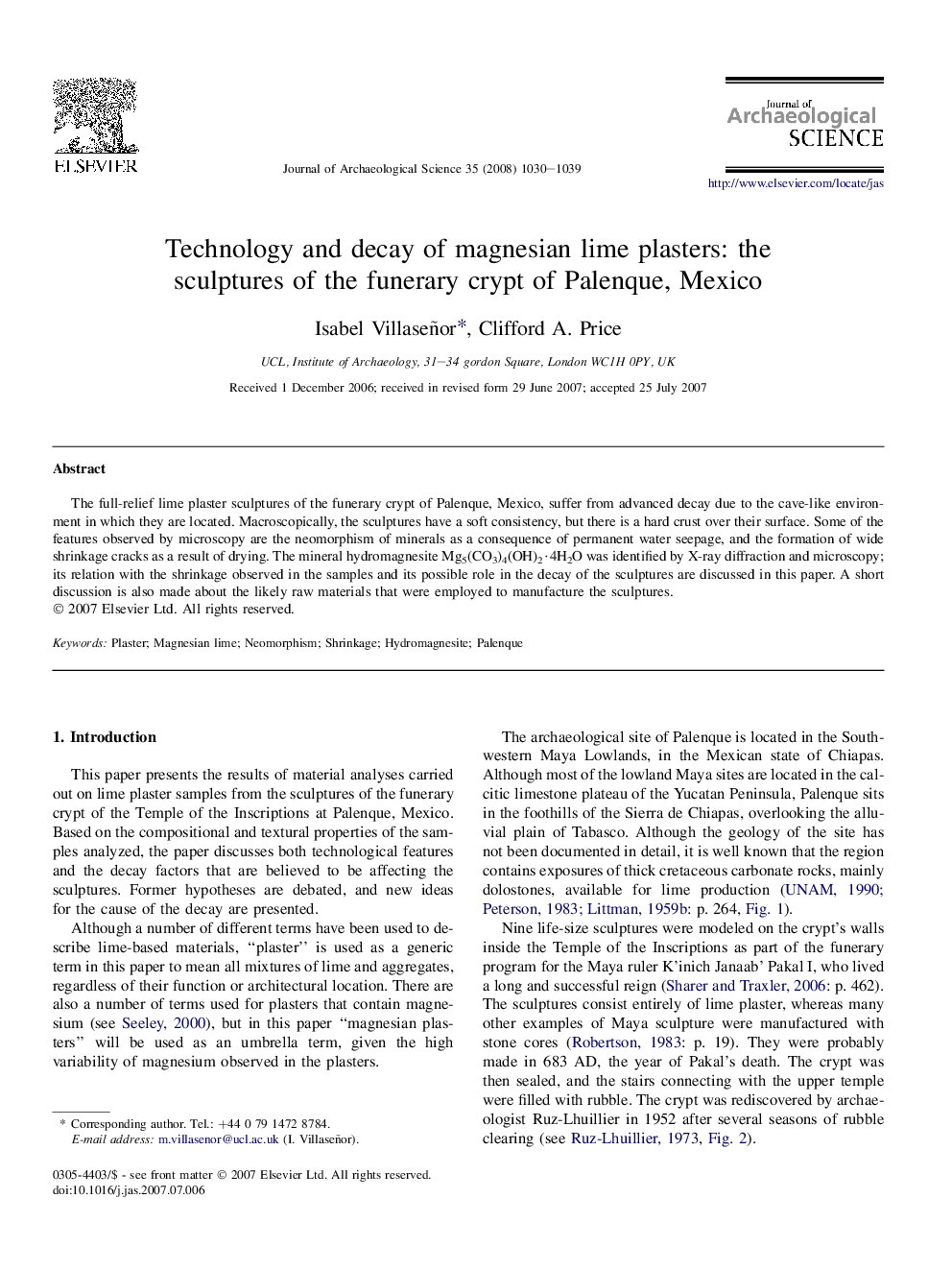| Article ID | Journal | Published Year | Pages | File Type |
|---|---|---|---|---|
| 1037459 | Journal of Archaeological Science | 2008 | 10 Pages |
The full-relief lime plaster sculptures of the funerary crypt of Palenque, Mexico, suffer from advanced decay due to the cave-like environment in which they are located. Macroscopically, the sculptures have a soft consistency, but there is a hard crust over their surface. Some of the features observed by microscopy are the neomorphism of minerals as a consequence of permanent water seepage, and the formation of wide shrinkage cracks as a result of drying. The mineral hydromagnesite Mg5(CO3)4(OH)2·4H2O was identified by X-ray diffraction and microscopy; its relation with the shrinkage observed in the samples and its possible role in the decay of the sculptures are discussed in this paper. A short discussion is also made about the likely raw materials that were employed to manufacture the sculptures.
